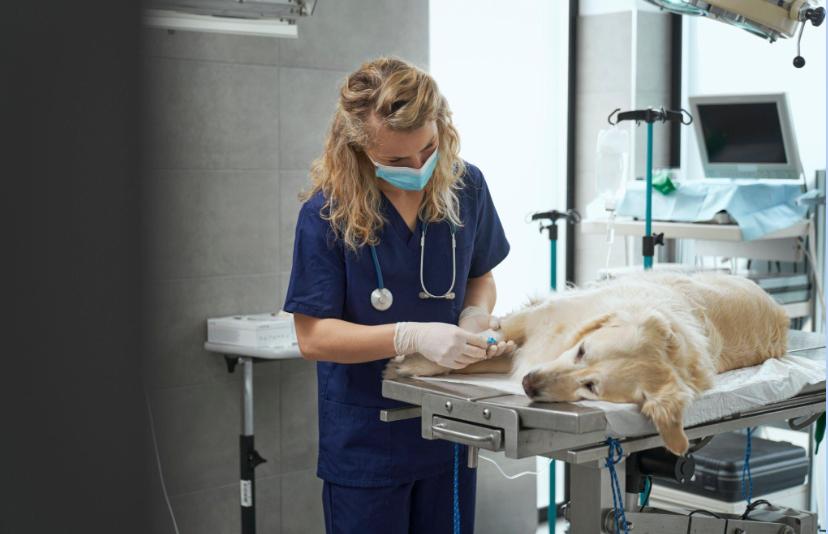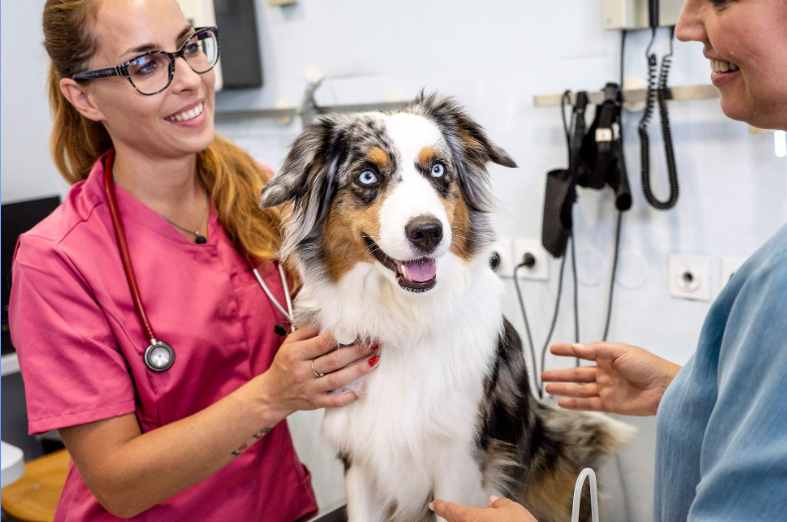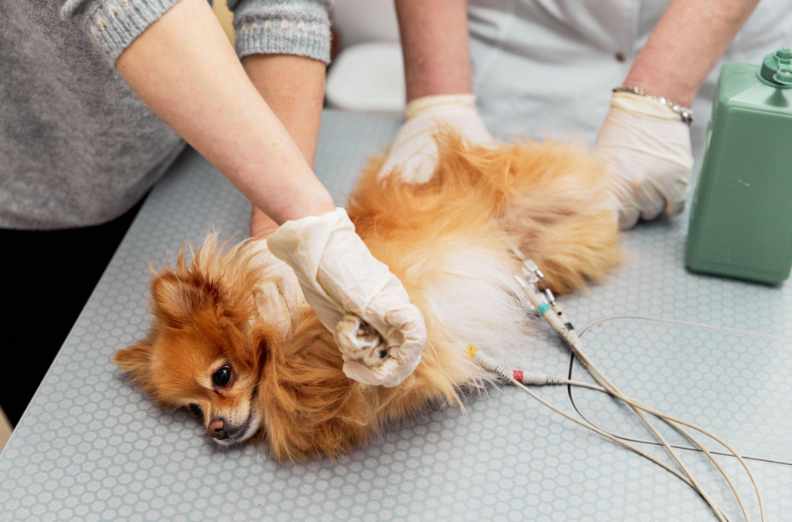The Cost of Spaying or Neutering Your Dog
Spaying or neutering your dog is critical for their health and well-being, as it can prevent various diseases and unwanted litters of puppies. But how much does it cost to spay or neuter a dog today? On average, dog owners will spend between $100 and $500 to spay or neuter their pets.
The exact price depends on several key factors
- Size of Dog: Small dogs (under 25 lbs) average $100-$300, medium dogs (25-50 lbs) average $150-$450, large dogs (over 50 lbs) average $200-$500
- Gender: Spaying females are more expensive, averaging $50-$150 more than neutering males
- Geographic Location: Prices are higher in major metro areas like NYC ($200-$600) versus rural areas ($75-$250)
- Vet Clinic: Full-service clinics are more expensive than low-cost clinics or mobile vans
- Additional Services: Extra costs for bloodwork, IV fluids, laser surgery, etc.

For example, based on average costs, spaying a 40 lb female dog in Chicago may cost $325 versus neutering an 80 lb male dog in Dallas for $275.
The good news is there are ways to reduce the costs through vet student programs, vaccine clinics, coupons, and financial assistance. The long-term health benefits and population control outweigh the upfront price tag. Be a responsible pet owner and get your furry best friend spayed or neutered.
Table of Contents
- What is spaying or neutering a dog?
- The critical medical and behavioral benefits of spaying or neutering dogs
- Average cost of spaying a female dog
- Typical costs for neutering a male dog
- Is neutering a male dog cheaper than spaying a female dog?
- Dog’s size and weight impact the cost of spaying?
- Average spay and neuter costs by region in the USA
- Compare Veterinary Hospitals vs. Low-Cost Clinics
- Does Pet Insurance Cover the Cost of Spaying or Neutering Your Dog?
- Is spaying or neutering painful for dogs?
- Conclusion
What is spaying or neutering a dog?
The definition of dog spaying
Spaying refers to surgically removing the ovaries and uterus of a female dog. This eliminates the ability to reproduce and prevents pregnancy.
The definition of dog Neutering
Neutering refers to surgically removing the testicles of a male dog. This eliminates the production of sperm and prevents reproduction.
Both procedures are considered routine surgeries licensed veterinarians perform, typically when dogs are 4-6 months old. The surgeries require general anesthesia and 1-2 days of recovery time. There may be restrictions on activity levels for 7-10 days after.
Spaying is more complex and invasive than neutering, involving an abdominal incision and removal of internal organs. This makes it a longer surgery with higher costs. Neutering is simpler since the testicles are external. It involves smaller incisions and usually has lower costs.
The main goals of both procedures are pet population control and health/behavioral benefits like reduced risks of certain cancers and aggression. Responsible pet owners should consider the long-term impacts and have their dogs spayed or neutered unless they plan to breed purebred dogs responsibly.
Spaying and neutering require surgical removal of reproductive organs to prevent breeding while providing health and behavioral benefits for dogs.
The critical medical and behavioral benefits of spaying or neutering dogs

Medical Benefits
- Prevents mammary tumors and breast cancer in female dogs – Spaying before the first heat cycle reduces risk to less than 1%.
- Eliminates risk of pyometra – A potentially fatal uterine infection seen in 23% – 24% of intact females.
- Reduces the risk of perianal tumors by 90% in males.
- Prevents testicular cancer, which occurs in 50% of intact males over 10 years old.
- Decreases prostate problems, including infection, abscesses, and cancer.
- Neutering eliminates testosterone production and associated risks like perianal hernias.
Behavioral benefits of spaying or neutering dogs
- Reduces roaming and desire to escape in search of mates. This prevents pets from getting lost or injured.
- Decreases urine marking and leg lifting in the house for males. Up to 80% of neutered males stop marking behaviors.
- Eliminates heat cycles and related restless/nervous behaviors in females.
- It can reduce aggression toward other dogs. Intact males are 2.6x more likely to bite.
- Reduces mounting behaviors and humping of other dogs, objects, or people’s legs.
- Improves focus and trainability. Dogs are less easily distracted and have decreased mating instincts.
- It makes male behavior more predictable and manageable by eliminating hormones.
- Intact males are more likely to fight with other males due to competition for females.
- Removes the stress and behaviors associated with females in heat, such as male attention and aggression between females.
- Decreases territorial urine marking and defensive behaviors in neutered males.
Spaying and neutering provide many behavioral perks that make dogs calmer, more predictable, and easier to train and control. It improves life for the dogs and owners alike.
Average cost of spaying a female dog
The average cost of spaying a female dog range from $200 to $500, depending on the dog’s size and other factors.
- Small dogs under 25 lbs cost ~$200-$350
- Medium dogs 25-50 lbs cost ~$250-$400
- Large dogs over 50 lbs cost ~$300-$500
The location also impacts prices. Average costs in major metro areas like Los Angeles or New York City run $350-$600, while more rural areas range from $150-$300.
Spay surgery involves general anesthesia and an abdominal incision to remove the ovaries and uterus.
This invasive procedure means added costs, including:
- Pre-surgery exam & lab work: $50-$150
- IV fluids and anesthesia monitoring: $50-$150
- E-collar cone for recovery: $10-$20
- Post-surgery pain medication: $20-$40
Additional services like “bloodwork, laser surgery, or microchipping” can add $50-$150+ to the total bill.
Non-profit clinics offer the lowest prices at $100-$250, while private veterinary hospitals are most expensive at $400-$600+.
Check with your vet on itemized costs. Most include the surgery, meds, and initial exam, but extras like bloodwork or e-collar may be add-on costs. Proper budgeting and shopping around can yield significant savings on this essential surgery.
Typical costs for neutering a male dog

The average cost of neutering a male dog range from $100-$350, depending on the dog’s size and other factors.
- Small dogs under 25 lbs average $100-$250
- Medium dogs 25-50 lbs average $150-$300
- Large dogs over 50 lbs average $200-$350
Location impacts pricing as well. Average costs in major cities like San Francisco or Boston run $200-$450, while rural areas range from $75-$200.
The neuter surgery is less complex than spaying. It involves general anesthesia and small incisions to remove the testicles.
Additional costs may include:
- Pre-surgery exam & bloodwork: $50-$100
- Anesthesia monitoring: $50-$100
- E-collar cone for recovery: $10-$20
- Pain medication: $15-$30
Extra services like laser surgery, microchipping, or vaccines can add $50-$150+ to the final cost.
Non-profit clinics offer the most affordable rates at $50-$150. Private veterinary hospitals range from $ 200 to $ 450+ on average.
Always clarify what’s included with the vet. Most cover the neuter surgery, meds, and initial exam, but items like bloodwork or e-collars may be extras. With some research, dog owners can find affordable neutering options.
Is neutering a male dog cheaper than spaying a female dog?
It is generally cheaper to neuter a male dog than to spay a female dog.
Here are some key reasons why,
- Spaying is a more complex surgery requiring an abdominal incision and removal of internal organs, including the ovaries and uterus. This makes it longer, more invasive, and more expensive.
- Neutering is simpler since testicles are external and easily accessible. Only small incisions are needed to remove them. The surgery is quicker and requires less resources.
- Spaying requires heavier sedation, anesthesia, and monitoring during surgery due to the invasiveness. Neutering can be done with lighter sedation.
- Pain medication and recovery times are less for neutering since it’s less invasive.
- The costs of staff time, surgical supplies, medications, etc., are lower for a neuter versus a spay surgery.
- On average, spaying costs range from $150-$500 depending on dog size, while neutering averages $100-$350.
So, in summary,
Yes, neutering a male dog is a simpler, faster, less invasive surgery than spaying a female. This translates into lower overall costs and fees for the neutering procedure.
Factors affect the cost of spaying or neutering a dog
- Size of the dog – Larger, heavier dogs will cost more as they require more anesthesia medication and resources during surgery.
- Age & health status – Younger, healthier dogs are usually cheaper. Older or sick dogs may need additional testing/monitoring, driving up costs.
- Gender – Spaying females is more expensive than neutering males due to the complexity of the surgery.
- Geographic location – Prices are higher in urban areas and lower in rural areas. The cost of living impacts vet service pricing.
- Type of vet clinic – Full-service vet hospitals are the most expensive. Non-profit clinics or mobile spay/neuter services offer lower pricing.
- Additional services – Extra fees may apply for bloodwork, IV fluids, anesthesia monitoring, pain medication, e-collars, etc.
- Breed – Some breeds, like English bulldogs with respiratory issues, may add complexity and expenses.
- Timing with other procedures – Combining the spay/neuter with other services like vaccinations is typically cheaper.
- Coupons or financial assistance – Look into special deals or financial aid programs to reduce out-of-pocket costs.
Knowing these cost factors can help guide decisions and budgeting when choosing the best time and provider for spay/neuter procedures.
Does physical condition affect the price of Spaying or Neutering Your Dog?

Yes. A dog’s physical health and pre-existing medical conditions can affect the price of spaying or neutering procedures.
Here are some examples:
- Dogs that are overweight or obese may require higher dosages of anesthesia medication and additional monitoring, increasing costs. The excess weight makes surgery more difficult.
- Dogs with undescended testicles or ovarian remnant syndrome in females will have more complicated surgeries and higher prices for the added complexity.
- Illnesses like heart disease, seizures, or respiratory problems can complicate anesthesia administration and surgical risks. Additional testing, monitoring, and medications usually add cost.
- Older dogs often have bloodwork and medical clearances before surgery to identify concerns. These diagnostics raise the total bill.
- Infections, hernias, or other issues that need correction during spay/neuter can mean longer surgical time and expenses.
- Pregnant dogs add complexity and usually cannot be spayed until after delivering the puppies, delaying the procedure.
- Dogs in heat at the time of surgery may have increased surgical bleeding risks, requiring more operation time.
Checking your dog’s health status and disclosing all conditions to your vet is essential for planning the safest and most cost-effective spay or neuter surgery possible. Any complications or special needs will likely raise the costs.
Dog’s size and weight impact the cost of spaying?
- Small dogs under 25 lbs have shorter surgery times, lower anesthesia needs, and fewer materials required. This makes spaying cheaper, averaging $200-$350.
- Medium dogs from 25-50 lbs involve moderately longer surgery, anesthesia, and materials, so costs are higher, averaging $250-$400.
- Large and giant breed dogs over 50+ lbs have the longest surgery times, the highest anesthesia requirements, and the most materials. Their spay costs are the highest, averaging $300-$500+.
- Bloodwork and medication dosages also scale up with dog size. Monitoring large dogs under anesthesia takes more time and attention as well.
- The larger abdominal incisions on bigger dogs require more surgical supplies for sutures/staples. More personnel may be needed to maneuver a heavy dog.
- Even prescription medications and e-collars are higher costs for giant breeds during recovery.
Checking with your vet on weight-based pricing tiers can help estimate size-related costs. Overall, the bigger the dog, the more resources are required and the higher the spay surgery expenses.
Average spay and neuter costs by region in the USA
Average Cost by Region
| Procedure | West Coast | East Coast | Midwest |
|---|---|---|---|
| Neuter – Over 6 Months | $300-$400 | $250-$350 | $200-$300 |
| Neuter – Under 6 Months | $250-$350 | $200-$300 | $150-$250 |
| Spay – Over 6 Months, <50 lbs | $350-$450 | $300-$400 | $250-$350 |
| Spay – Over 6 Months, >50 lbs | $400-$500 | $350-$450 | $300-$400 |
| Spay – Under 6 Months | $300-$400 | $250-$350 | $200-$300 |
Key Notes:
- West Coast and East Coast prices tend to be higher due to higher costs of living
- Rural Midwest areas have the lowest average prices
- Younger dogs under 6 months are cheaper to spay/neuter
- Larger dogs over 50 lbs have higher surgery costs
- Always get an itemized estimate from your specific vet for exact pricing
- Low-cost clinics can provide discounts of 50% or more in some cases
While prices vary, knowing regional averages can help guide expectations on spay/neuter costs across the US. Be sure to factor in your dog’s age, size, and clinic type.
Compare Veterinary Hospitals vs. Low-Cost Clinics
When comparing between veterinary hospitals and low-cost clinics for spay/neuter procedures, we can find many differences.
Here are some key differences:-
- Veterinary hospitals provide full-service care but at higher prices, averaging $300-$600, depending on location and other factors. They may offer more convenience and flexible scheduling.
- Low-cost clinics offer spay/neuter for ~50-75% less than hospitals but have limited capacity and services. Waitlists are common.
- Veterinary hospitals can access your dog’s medical history and provide personalized care. Low-cost clinics offer more basic, limited care.
- Hospitals can bundle extra services like bloodwork, vaccines, microchipping, etc., into the spay/neuter. Low-cost clinics offer minimal add-ons.
- You usually need to prove financial need and low income to use low-cost clinics. Hospitals don’t have financial restrictions.
- Low-cost clinics are sparse in some rural areas. Hospitals give geographic flexibility but may still require travel.
Evaluating your budget, location, dog’s health, and scheduling flexibility can help you choose between a full-service vet hospital or a low-cost spay/neuter clinic. Both have pros and cons.
Tips for finding low-cost spay or neuter clinics in your area
- Check with local animal shelters and humane societies. Many operate their on-site low-cost clinics.
- Search for ‘low-cost spay and neuter [your city]’ online. Look for clinics operated by non-profits.
- Contact local ASPCA or SPCA chapters. Some will have clinic programs or be able to refer you.
- Search for mobile spay/neuter clinics – these operate in underserved areas on a pop-up basis.
- Look for spay/neuter services at pet stores like PetSmart and Petco.
- Investigate veterinary school and vet tech programs, which sometimes offer discounted services.
- Ask your current vet about any discounted spay/neuter options.
- Search sites like PetSmart Charities and the Humane Society for databases of low-cost clinics.
- Check if any government or non-profit programs in your area offer spay/neuter assistance or vouchers.
With some diligent research, there are often affordable spay and neuter options available in most regions. Shelters and non-profits are a great starting point.
Does Pet Insurance Cover the Cost of Spaying or Neutering Your Dog?
Yes. Standard pet insurance plans do not cover spaying or neutering since they are considered elective procedures.
However, there are some options:
- Some insurers like ASPCA and Embrace offer wellness add-on plans that reimburse part of the spay/neuter costs. Typically, 50-90% reimbursement is up to a benefit limit.
- Wellness plans through providers like Banfield Pet Hospital include spay/neuter coverage. The monthly premium covers discounted services.
- Accident-only insurance covers unplanned medical costs, not elective procedures like spay/neuter.
- Look for insurers that include spay/neuter coverage in puppy plans for young dogs under 1 year old.
- Pet insurance will cover complications or illnesses arising from the procedure, though not the routine cost.
- Maximum payouts and waiting periods apply for reimbursements, so review policy details closely.
- Wellness plans tend to be more economical than insurance add-ons for spay/neuter.
While not part of standard policies, some pet insurance options can reduce out-of-pocket spay and neuter costs through reimbursements or discounted services.
Is spaying or neutering painful for dogs?
Yes. Spaying and neutering are done under general anesthesia so dogs do not feel pain during the surgery. However, there can be some pain afterward.
- Most vets prescribe post-operative pain medication, like buprenorphine or meloxicam, for 3-5 days after surgery. This helps manage any surgical pain.
- During recovery, dogs may experience mild to moderate discomfort, swelling, and tenderness around the incision site.
- Restricted activity, medications, ice packs, and E-collars minimize pain and allow proper healing after spay/neuter procedures.
- Signs of pain include whimpering, licking the surgery site excessively, changes in appetite or behavior, etc. This warrants a vet checkup.
- Serious complications like infections, abscesses, or hematomas can increase pain levels and require prompt veterinary treatment.
- Most dogs resume normal activity levels within 7-10 days after spaying or neutering once healing progresses.
www.puppiesdiary.com
So, while the surgeries are painless, the aftermath may involve mild pain that veterinarians manage with meds and monitoring during recovery. Overall, spay/neuter procedures are well tolerated by most healthy dogs.
Conclusion
The value of spaying and neutering dogs despite the costs involved.
Here are some key takeaways:
- The health and behavioral benefits of spay/neuter far outweigh their upfront costs for most dog owners. Preventing disease and improving training/socialization have lifelong positive impacts.
- However, it is smart to research pricing based on your dog’s age, size, gender, and clinic options in your area. This allows realistic budgeting.
- Be clear on what specific services, medications, and aftercare are included in quoted prices. Additional bloodwork or meds may cost extra.
- Consider timing for maximum savings – some clinics offer deals on spay/neuter for puppies under 6 months old.
- If money is tight, look into low-cost clinics, medical grants, and financial assistance programs. Don’t avoid this important procedure.
- Overall, spaying and neutering your dog is a highly recommended investment to improve the quality of life for your pet and prevent accidental litters.
With proper planning and budgeting, dog owners can find affordable spay/neuter options and reap the rewards of having a happier, healthier, better-behaved furry companion.


![How Can I Treat A Hole In My Dog's Skin? [3 Hidden Tips To Fast Cure] 6 How Can I Treat A Hole In My Dog’s Skin? [3 Hidden Tips To Fast Cure]](https://www.puppiesdiary.com/wp-content/uploads/2023/04/How-Can-I-Treat-A-Hole-In-My-Dogs-Skin-768x456.webp)
![Canine Epilepsy Symptoms, Stages, Diagnosis, And Treatment Process [Vet Advice] 7 Canine Epilepsy Symptoms, Stages, Diagnosis, And Treatment Process [Vet Advice]](https://www.puppiesdiary.com/wp-content/uploads/2023/11/Canine-Epilepsy-Stages-768x528.jpg)


